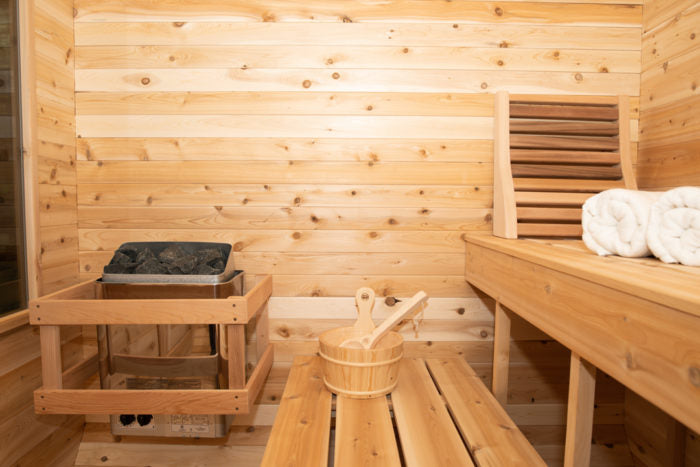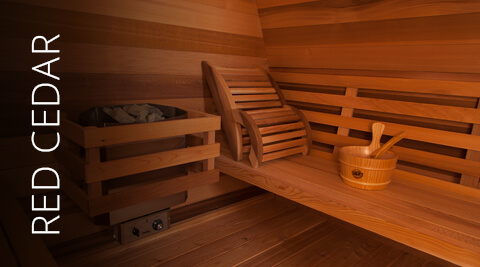Traditional Sauna Fundamentals Explained
Traditional Sauna Fundamentals Explained
Blog Article
The smart Trick of Traditional Sauna That Nobody is Talking About
Table of ContentsTraditional Sauna Things To Know Before You BuyAll About Traditional SaunaHow Traditional Sauna can Save You Time, Stress, and Money.Traditional Sauna Things To Know Before You Get ThisThe 7-Second Trick For Traditional Sauna
A lot of the weight lost in a sauna is water loss and is re-gained upon rehydrating. Without a question sauna can be a vital component of a healthy weight loss program. To look at the differences in between traditional and IR saunas, I will separate these into proven, theoretical, and made distinctions.Hence, the best factor in the saunawhich is at the ceiling straight over the sauna heateris usually in between 185 and 190 F. Claims that a standard sauna goes beyond 200 F is simply not true and not relevant for electric saunas offered in the US. The temperature level for a far-infrared sauna is generally established between 120 and 140 F; however, unlike the standard sauna, the goal in and IR space is not to accomplish a high temperature.
Due to this, the temperature level distinction is nearly irrelevant, because extreme sweating results in both sauna kinds, yet the approach of warming the body is various. In an IR sauna the bather will certainly really feel warm and will certainly sweat profusely, yet at a lot reduced temperatures (Traditional Sauna). Thus, if the goal is to spend longer amount of times in the sauna, the IR sauna is a great choice
When a standard sauna has actually been appropriately warmed, the sauna walls are warm, the air temperature has actually attained established temperature and the rocks are incredibly warmed. As an intriguing side note, the warmed walls and the rocks are releasing far-infrared heat, combined with the heated air, to produce an "enveloping warm".
The Buzz on Traditional Sauna

When the high temperature level is accomplished, the components cycle on and off to maintain the high temperature level. The majority of conventional sauna users enjoy putting water over the rocks to create steam to increase sauna moisture degrees. The benefits of putting water over the rocks include: making the room a lot more comfortable, dampening the nasal flows, and enabling the use of aromatherapy by mixing crucial oils with the water.

When the energy gets in the body, it creates the body temperature to boost and eventually leads to perspiration. In an infrared sauna it is essential for the emitters/heaters to stay on nearly frequently. Since there is pop over to these guys no mass of rocks to retain heat, the sauna will cool if the emitters shut down.
As stated over, the sauna bather in an infrared space wishes to position himself in front of running emitters to obtain visit their website optimal take advantage of the warm. The home heating time for both rooms can be extremely different, depending upon exactly how the rooms are utilized. For a conventional sauna, a bather must allow 30-40 minutes for the area to accomplish a wanted temperature and to correctly pre-heat the rocks.
Traditional Sauna Fundamentals Explained
A well built sauna will commonly achieve a temperature of 150-160 F in concerning 30-40 mins. For hotter temperatures, the area may need to warmth for a longer period.

Standard saunas tend to be bigger (for this reason utilize more electrical energy) than infrared saunas, although conventional saunas are absolutely available in one and 2 individual sizes. For a two-person conventional sauna, 5x6 or 5x7 dimension is most popular. The leading bench can comfortably seat two or 3 individuals and is likewise enough time to relax during the sauna session.
The smart Trick of Traditional Sauna That Nobody is Discussing
The average cost per kWH of electricity in the united state is about $0.11, so a 4.5 kW heating unit will cost roughly $.50 to run for one hour, if the heating unit runs continuously for one hour. Normally a sauna heater will certainly compete 75% of the initial hour and 50% of succeeding hours on since the elements cycle once the set temperature level is attained.

There is a seldom reviewed distinction in the social experience between the 2 rooms. While our culture has actually shed several of the social benefit of the standard sauna experience, it can be really socially rewarding (Traditional Sauna). From family members time in the sauna, to heart-felt discussions with loved ones, to sauna partiesthe traditional sauna experience can result in intimate interacting socially
Indicators on Traditional Sauna You Need To Know
Many higher Read Full Article end infrared areas consist of tinted light therapy, sound systems and full-glass fronts.
Report this page